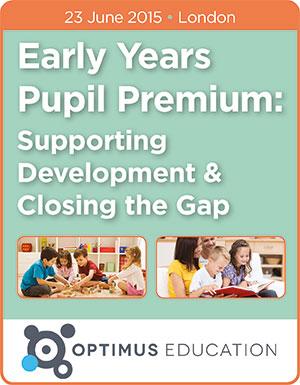The DfE’s decision to introduce an early years pupil premium was welcomed with open arms. But with opportunity comes challenge, as content lead Alex Masters discovers
Did you know that 90% of all brain development occurs by the age of five? Did you also know that recent research shows a 19-month gap in ‘school readiness’ between the most and least advantaged children? When viewing these statistics side-by-side, the implications are unsettling. Little wonder, then, that the DfE introduced the early years pupil premium (EYPP) earlier this year in a bid to improve education for disadvantaged three and four-year-olds. But, of course, with opportunity comes responsibility and schools will be rigorously held to account for closing this gap. The responsibilities are as daunting as they are vast: not only will you need to develop ways to use the funding effectively and creatively to support children’s learning and development but you will also have to evidence the impact. These demands will require identifying need, relevant strategies, prioritising, thorough budget planning, monitoring progress, interventions, data collection, pooling resources collaboration, parental engagement, evidencing impact to Ofsted… the list goes on.
 Practical, research-based, high-impact strategies
Practical, research-based, high-impact strategiesOptimus Education’s conference next week could not be better timed. Early Years Pupil Premium: Closing the Gap & Evidencing Impact will address these challenges and offer expert advice.
It was interesting to hear the range of advice from experts on some of your general questions and pitfalls to avoid. Do also check our video interview with ‘Pupil Premium Champion’ Sir John Dunford, including an eloquent case for why the pupil premium is working, contrary to some beliefs. Having trouble accessing the resources above? Why not find out how Optimus supports schools with their CPD provision and request a demo of our In-House Training and Knowledge centre. It’s obligation free, and a great way to support staff development in your school.